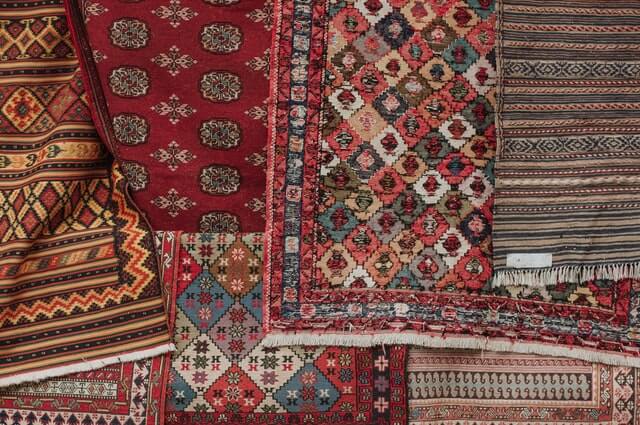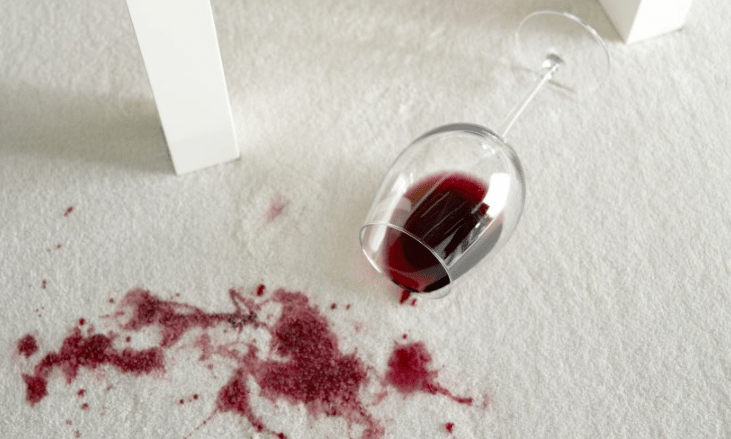Carpet Stains: Types, Appearance, Cleaning Tips
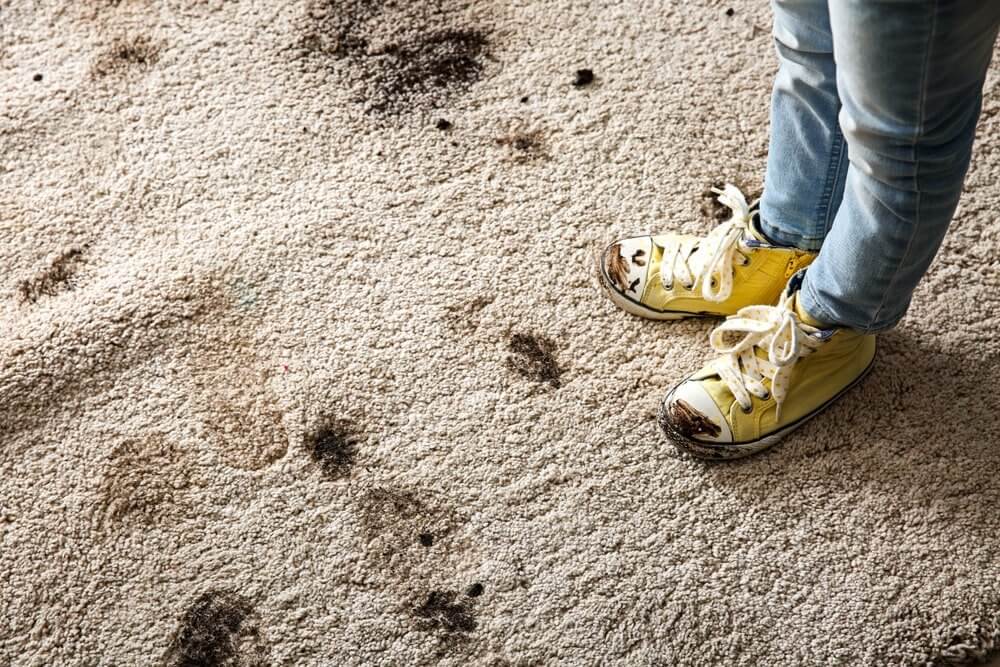
Carpet Stains: Everything You Need to Know!
Stains in a carpet are inevitable. They are bound to happen no matter how many times you constantly remind your family and guests that the shoes should be left at the door, the dirty plates should be kept in the kitchen and to use coasters when having any beverage. It’s like whatever is not supposed to get on a carpet always does. But of course you don’t want to be a person that seems like no fun.
The fear that your beautiful carpet will be ruined with hard-to-remove stains is real! Oops! From dirt, to mud, wine and coffee, there are a variety of potential stains to look out for.
If you’re looking out for ways for optimal carpet stain removal, then it is crucial that you’re aware of:
- Different types of stains to determine what was spilled
- How this stain affects the carpet
- And some foolproof carpet cleaning tips so you do not end up causing more damage to that lovely carpet.
Our comprehensive blog covers all the above mentioned, so let’s get started!
Types of Carpet Stains & How to Remove Them
1. Water-Soluble Stains
These type of carpet stains are usually the easiest to remove. They include soda, alcoholic beverages such as beer, wine, etc, jelly, fruit and fruit juices. The best way to ensure this stain is removed is to clean it while it is still fresh by removing the solid pieces and blotting it with a little water. Please do not rub, as this will cause the liquid based stain to seep deep into the carpet fibres.
Appearance:
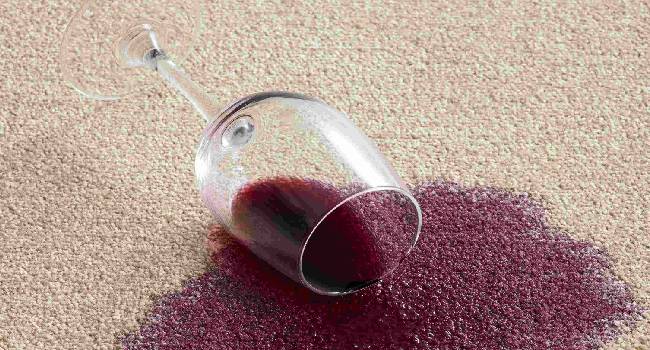
How to Remove Water-Soluble Stains
- Utilize a clean white towel and dip it in water
- Next, blot gently working from the outside edges of the carpet to the centre.
- Now, mix eight ounces of water with a quarter teaspoon of mild hand dish soap and blot again.
- Once the stain is removed, ensure you rinse out any soap left on the carpet with clean water such that no residue is left.
Spilled red wine on your carpet? Learn more about how to remove them here!
2. Protein-Based Stains
These too are water-soluble carpet stains but are protein-based. This means that the enzymes present in these water-soluble stains become darker when they come into contact with heat or any acidic item, making them grab tightly onto the carpet fibres. These include blood, dairy, any bodily fluid, meat and any meat juices.
Appearance
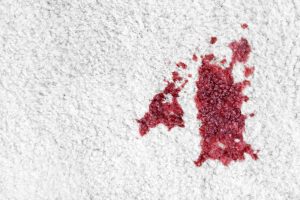
How to Remove Protein Based Stains
- Blood stains on your carpet should be treated with cold water immediately. This is because blood solidifies in warm temperature and the cold water prevents the blood from seeping deep into the carpet.
- If you have a wool carpet, add about 2 tablespoons of any grease-fighting dishwashing liquid to a bottle with cold water in it and spray it on the blood stain until the carpet is completely wet with the solution.
- If you have a non-wool carpet, take one tablespoon of ammonia mixed with one cup of water instead of dishwashing soap.
- If you have a white carpet, you should replace ammonia with hydrogen peroxide.
- Finally, dry the carpet with a cloth or paper towel and again rinse thoroughly with cold water.
3. Oil-Based Stains
These types of carpet stains are excruciatingly difficult to remove. This is because fat and oil-based stains naturally stick to other fats and oils. Some manufacturers are aware of this hard-to-remove stain and add treatment and coatings to the carpet to help with the stain-cleaning process. Examples of this type of stain are lipstick, grease from cooking, salad dressings as well as petroleum jelly.
Appearance
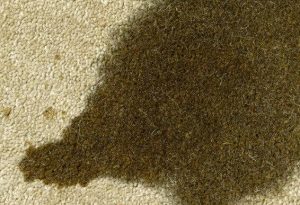
How to Remove Oil-Based Stains
- Check your carpet manufacturers guidelines. If your carpet has a stain fighting treatment, you can generally treat it with a mild dish soap and water solution as the water-soluble stain.
- If your carpet is untreated, it is best to go with the dry cleaning technique. To do this, take a paper towel and put it on the carpet.
- Next, iron the carpet warm. This will lead to the fat and oil sticking to the towel.
4. Wax & Gum Stains:
Wax and gum related carpet stains can settle ground deep into the fibres of the carpet making them really difficult to remove compared to oil-based stains. When items such as wax or gum go deep, attempting to peel them off can cause significant damage to the carpet. One needs utmost patience when removing such stains.
Appearance
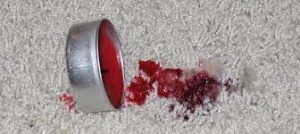
How to Remove Wax & Gum Stains on Carpet
- Begin by freezing the gum or wax with ice, and then breaking it with a blunt item like a knife and spoon.
- Next, vacuum the gum or wax pieces before they soften and then use a white towel to dry the carpet.
- These white towels should be used to absorb the liquid, and once all the liquid is absorbed, dry the carpet with a moist cloth.
- Then spray the carpet with a combination of 1 part water and 1 part vinegar.
- Now, spray 32 ounces of water mixed with ½ teaspoon of mild, non-bleach detergent.
- Finally, rinse it off well and let the carpet air dry.
5. Cigarette Stains
Nicotine in cigarettes can leave lingering yellow stains and a powerful odour on your carpet. Unfortunately, removing nicotine stains is hectic and needs a professional’s help.
Appearance
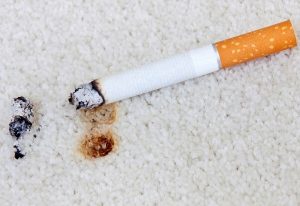
How to Remove Cigarette Stains
- Start by combining 1 part glycerin, 1 part white dishwashing detergent and 8 parts of water in a large jar or bucket.
- Next, add one-fourth cup of distilled white vinegar to help with the odour and mix it well before using the same to treat the stain spot.
- Now, take a white cloth or paper towel and work from the outside edges of the carpet all the way to the centre.
- Continue blotting the stain with this mixture until you see no stain is transferred to the cloth.
- Finally, allow the carpet to air dry, and keep the carpet away from direct heat.
- Repeat the procedure if necessary.
6. Dirt & Mud-Based Stains
Mud is wet dirt that lands on the carpet and gets harder to remove, as it pushes the soil deeper into the fibres of the carpet. Because soil consists of decomposed organic material, a mud stain should at first be treated exactly like blood or any protein-based stain.
Appearance
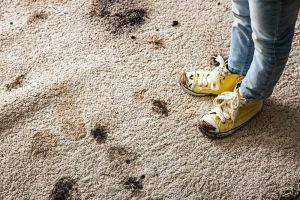
How to Remove Mud Stains
- To remove mud from your carpet, start by letting it first dry before vacuuming. Ensure that you do not rub the carpet with a cloth as this will only permeate the stain deep into the carpet.
- Now, vacuum over the area multiple times, until you notice that most of the dirt is gathered up.
- Next, take one teaspoon of dishwashing detergent and mix it in one cup of warm water.
- Now, take a white cloth or paper towel and blot over the stain until it is gone.
- Finally, let the carpet air dry.
7. Urine Stains
Urine stains are commonly caused by pets and toddlers. These stains develop gradually and are noticed after a long period has elapsed, permanently damaging the dyes and carpet fibres if not removed on time.
Appearance
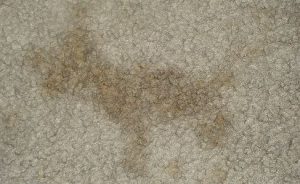
How to Remove Urine Stains
- In order to check for old urine stains, turn off the lights of the room and use a black light. This will display old urine stains.
- Now, use chalk to outline these affected areas on your carpet.
- Next, absorb as much of the urine as you can with white towels and then use a damp, cool cloth to blot further.
- Next, mix one part white vinegar with one part water and spray or blot this on the affected area.
- Use a solution of half a teaspoon of mild, non-bleach detergent and mix it with 32 ounces of water.
- Finally, rinse and blot the carpet dry.
Carpet Cleaning Tips & Maintenance
Mishaps happen! Keeping carpets in pristine condition all the time is a challenge for homemakers, that is why a professional cleaning every 12 to 18 months becomes crucial to preserve the colour, texture and fibre of carpets.
Although if you decide to take up the frantic job of doing carpet cleaning yourself rather than hiring a professional, there are a few tips from our experts:
- The right tools are necessary, so ensure that you have a great carpet cleaning machine with high enough power such that your carpet can dry in 6-12 hours so that you do not risk damaging your carpet due to it being too wet.
- Use a fan or dehumidifier to accelerate drying time. This is because if your carpet is wet for more than 24 hours, there is a higher chance of the growth of mould and bacteria.
- Use a cleaning product that has a pH of 10 or less, and make sure you rinse off all the detergent residue after cleansing.
- You need to check your warranty as carpets that have stain resistance require products that are specially formulated for them or you risk damaging your carpet.
Do keep in mind though that cleaning a carpet by yourself requires knowledge about different carpet stains as well as what products and equipment to use to effectively clean them. For a stress-free, time-saving and faultless carpet cleaning job, always opt for a professional. As they rightly say “If you think it’s expensive to hire a professional, wait until you hire an amateur.
Don’t take the risk! Book an exemplary carpet cleaning service Now!
Ali September 20, 2021 Carpet Stains
